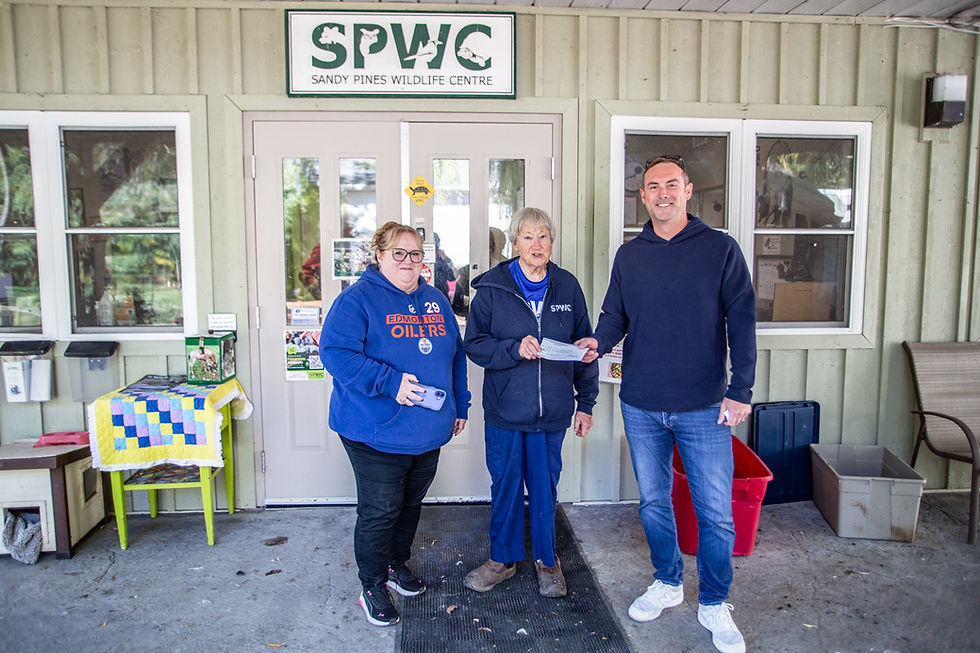Keep Your Roof and Home Cozy This Winter
- cleancomfort
- Nov 13, 2024
- 4 min read
Updated: Mar 25
Winter is coming. But is your house ready? It’s time to prepare your home for the harsh realities of winter. Protecting your roof is a crucial aspect of winterizing, ensuring a safe and comfortable living environment.
Our team at Clean Comfort Home Improvements, your trusted partner in home roofing solutions in Kingston and Eastern Ontario, has insights on how snow and ice can affect different roof types and wants to provide you with practical tips on preventing & addressing common winter roofing issues. Additionally, we'll guide you through the essential steps to take in case of a winter roofing emergency, offering temporary solutions until our professional team arrives to ensure a permanent solution.
The Impact of Winter on Different Roof Types:
Winter weather can damage your roof. Heavy snowfall, icy conditions, and temperature fluctuations can have varying effects on different types of roofs, leading to a variety of problems, including:
Asphalt Shingles
Ice dams: Asphalt shingles are particularly susceptible to ice dams, which form when snow melts near the roof's edge and refreezes. This can cause water to back up and leak into your home.
Heavy snow loads: Excessive snow can weigh down asphalt shingles, leading to damage or even roof collapse.
Metal Roofs
Ice dams: While metal roofs often shed snow more effectively than asphalt shingles, they can still experience ice dams if not properly maintained.
Corrosion: Extreme cold and moisture can contribute to corrosion of metal roofing materials, especially if the metal is not treated or maintained properly.
Flat Roofs
Ponding water: Flat roofs can accumulate snow and ice, leading to ponding water and increased risk of leaks.
Roof membrane damage: The weight of snow and ice can damage the roof membrane, leading to leaks and water infiltration.
It's important to note that all roof types can be affected by winter weather, but the specific risks may vary based on factors such as the roof's age, condition, pitch, and the severity of winter conditions.
Preventive Measures for Protecting Your Roof in Winter
Here are some preventive measures that we recommend taking to help protect your roof during the winter:
Regular Maintenance:
Roof Inspections: Schedule regular roof inspections, especially before and after winter, to identify potential problems early on.
Gutter Cleaning: Clean gutters and downspouts to ensure proper water flow and prevent ice dams.
Chimney Inspection: If you have a fireplace or wood stove, ensure your chimney is clean and in good condition to prevent creosote buildup and potential fires.
Winterization Tips:
Snow Removal: Safely remove snow from your roof to prevent excessive weight and ice dam formation. Use a roof rake or hire a professional for larger jobs.
Ice Dam Prevention: Consider using a de-icing cable or heated gutter guards to help prevent ice dams.
Insulation: Ensure your attic is well-insulated to prevent heat loss and reduce the risk of ice dams.
Seal Leaks: Seal any cracks or leaks around your roof, flashing, and chimneys to prevent moisture infiltration.
Be Prepared In Case of an Emergency:
Emergency Kit: Have an emergency kit prepared with essential supplies, such as flashlights, batteries, a first-aid kit, and a supply of non-perishable food and water.
Contact Information: Keep a list of emergency contacts, including your roofing contractor, local authorities, and insurance company.
Insurance Review: Review your homeowners insurance policy to ensure you have adequate coverage for winter-related damage.
Temporary Measures During a Roof Emergency
If you experience a roof emergency, it's important to take immediate steps to protect your home until professional help arrives. Here are some temporary measures you can consider:
Tarping
Cover damaged areas: If you can safely identify the source of the leak, cover the damaged area with a waterproof tarp to prevent further water infiltration.
Secure the tarp: Use heavy-duty tarps and secure them tightly to your roof to prevent them from being blown away by strong winds.
Interior Protection
Place buckets or containers: Place buckets or containers underneath leaks to catch water and prevent damage to your ceilings, walls, and flooring.
Move valuables: If the leak is severe, move valuable items away from the affected area to protect them from water damage.
Safety First
Avoid climbing onto the roof: It is generally unsafe to climb onto a damaged roof, as the structure may be compromised.
Seek professional help: Contact a qualified roofing contractor as soon as possible to assess the damage and make necessary repairs.
Remember: These are temporary measures to help mitigate damage until a professional can address the underlying issue. It's crucial to seek professional assistance promptly to prevent further damage and ensure your home's safety.
Now that you have all the information you need, you're ready to protect your home from the harsh elements of winter. By taking proactive steps to maintain your roof and prepare for emergencies, you can ensure a comfortable and safe living environment.
Clean Comfort Home Improvements is here to assist you throughout the winter season. Our team of experts offers comprehensive roofing solutions, from regular inspections to emergency repairs.
Contact us today to schedule your winter roof inspection or to discuss your specific needs. Let us help you weather the storm and enjoy a cozy winter in your home.



